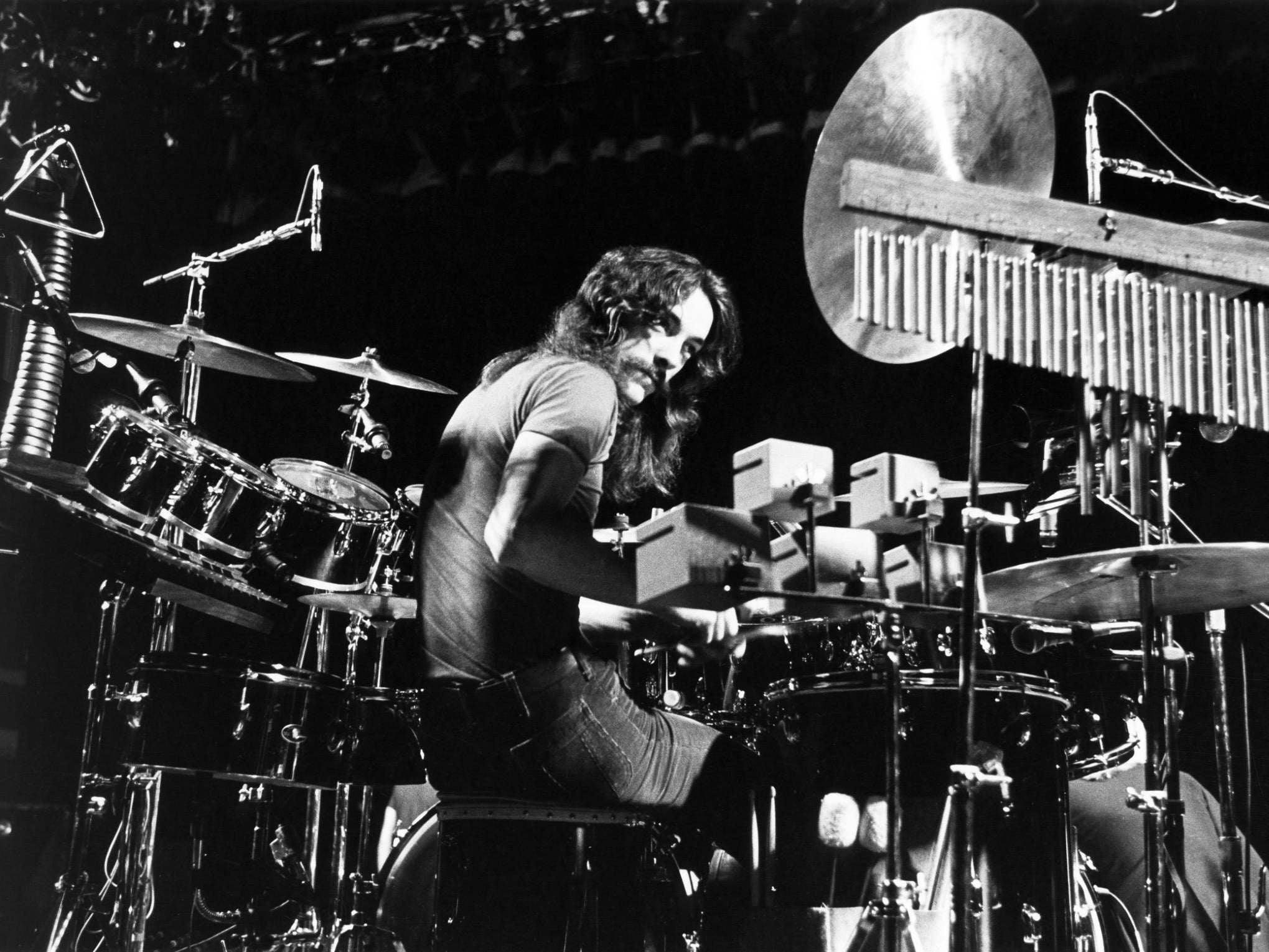Neil Peart: Dynamic and influential rock drummer who forged a style of his own
Powering the Canadian trio Rush for four decades, Peart was considered one of the all-time greats behind the kit

Neil Peart, long considered one of the greatest drummers in rock history, powered the Canadian band Rush for more than four decades with a steady drive and polyrhythmic eruptions behind an enormous kit.
Peart, who has died of brain cancer aged 67, joined the outfit in 1974, finalising the line-up – with Geddy Lee (bass, vocals, keyboards) and Alex Lifeson (guitars) – of what would become one of the most enduring and beloved groups in prog rock.
Beginning as a blues-influenced rock band in 1968, Rush evolved through the years, borrowing elements of heavy metal and punk music to create a distinctive style that won millions of devoted followers, if not always critical acclaim.
Despite being snubbed by critics and major awards – Rush never won a Grammy – the group developed an intensely loyal fanbase. It wasn’t just the band’s longevity or its pyrotechnic live shows, complete with projected images and dazzling lighting effects, that appealed to its fans.
In 2016 Rolling Stone named Peart the fourth greatest rock drummer in history, after John Bonham, Keith Moon (Peart’s idol) and Ginger Baker. Every Rush concert featured an extended drum solo or two by Peart, in which he created dramatic compositions in percussion on a gold-plated drum set of more than 30 pieces, including chimes, gongs, electronic gadgets and a dozen cymbals.
During Peart’s years with Rush, the band released more than 20 albums, 14 of which were certified platinum. More than 40 million Rush records have been sold worldwide, and only the Beatles and Rolling Stones had more consecutive gold or platinum albums. Perhaps the group’s best-known album was Moving Pictures (1981), which has sold nearly 5 million copies.
“When punk and new wave came,” Peart said, “we were young enough to gently incorporate it into our music, rather than getting reactionary about it – like other musicians who I heard saying: ‘What are we supposed to do now, forget how to play?’ We were fans enough to go, ‘Oh, we want that too.’ And by Moving Pictures, we nailed it, learning how to be seamlessly complex and to compact a large arrangement into a concise statement.”
Among the band’s best-known tunes are “Tom Sawyer” and “Limelight”, both from Moving Pictures, along with “Fly by Night”, “Closer to the Heart”, “Time Stand Still” and “The Spirit of Radio”.
Peart took a cerebral approach to both his drumming and songwriting. As a drummer, he understood that the “China cymbals” used for sonic accents in rock music were used in classic Chinese opera. He deeply admired African hand-drumming and jazz as well.
As a songwriter, he was inspired by science fiction, classical mythology and his wide literary interests. Some of the lyrics Peart wrote in the 1970s reflected the libertarian ideas of Ayn Rand, whose novels he eagerly read at the time, though he later disavowed those beliefs.
Neil Ellwood Peart was born in 1952, in Hamilton, Ontario, and grew up in what is now St Catharines, about 70 miles from Toronto. His father sold farm equipment and his mother was a homemaker. Peart began playing drums at 13, after seeing a movie about Gene Krupa, the big-band drummer who played with Benny Goodman and helped to put drummers in the spotlight. Peart was soon drawn to rock music, particularly the Who and its drummer, Moon. For years, he wore a piece of brass around his neck, from a cymbal Moon had shattered at a Toronto concert.
When the 6ft 4in Peart auditioned for Rush in 1974, he was “this big goofy guy with a small drum kit”, Lee said. “We thought he was a hick from the country. And then he sat down behind this kit and pummelled the drums, and us. I’d never heard a drummer like that, someone with that power and dexterity. As far as I was concerned, he was hired from the minute he started playing.”
Peart said one of the reasons Rush stayed together so long was that the three band members had a shared sense of humour and dedication to their craft. “If any of us were the slightest bit less stable,” he once said, “the slightest bit less disciplined or less humorous or more mean, or in any way different, it wouldn’t have worked. So there’s a miracle there.”
In 1997 Peart’s 19-year-old daughter, Selena, was killed in a car accident in Toronto. A year later, his common-law wife of 23 years, Jackie Taylor, died of cancer. Peart went on hiatus form the band and embarked on a 14-month motorcycle journey that took him from Canada to Central America. He wrote about his travels and sense of loss in Ghost Rider (2002), one of several books he published.
Peart settled in Los Angeles and in 2002 reunited with his bandmates. The group continued to tour until 2015: the drummer travelled between cities by motorcycle.
When he sat down at the drums, Peart said, he always tried to recapture the spirit he felt when he was starting out in music. “I set out to never betray the values that 16-year-old had,” he said, “to never sell out, to never bow to the man. A compromise is what I can never accept.”
He is survived his wife Carrie Nuttall, whom he married in 2000, and a daughter.
Neil Peart, musician, born 12 September 1952, died 7 January 2020
© Washington Post
Join our commenting forum
Join thought-provoking conversations, follow other Independent readers and see their replies
Comments
Bookmark popover
Removed from bookmarks